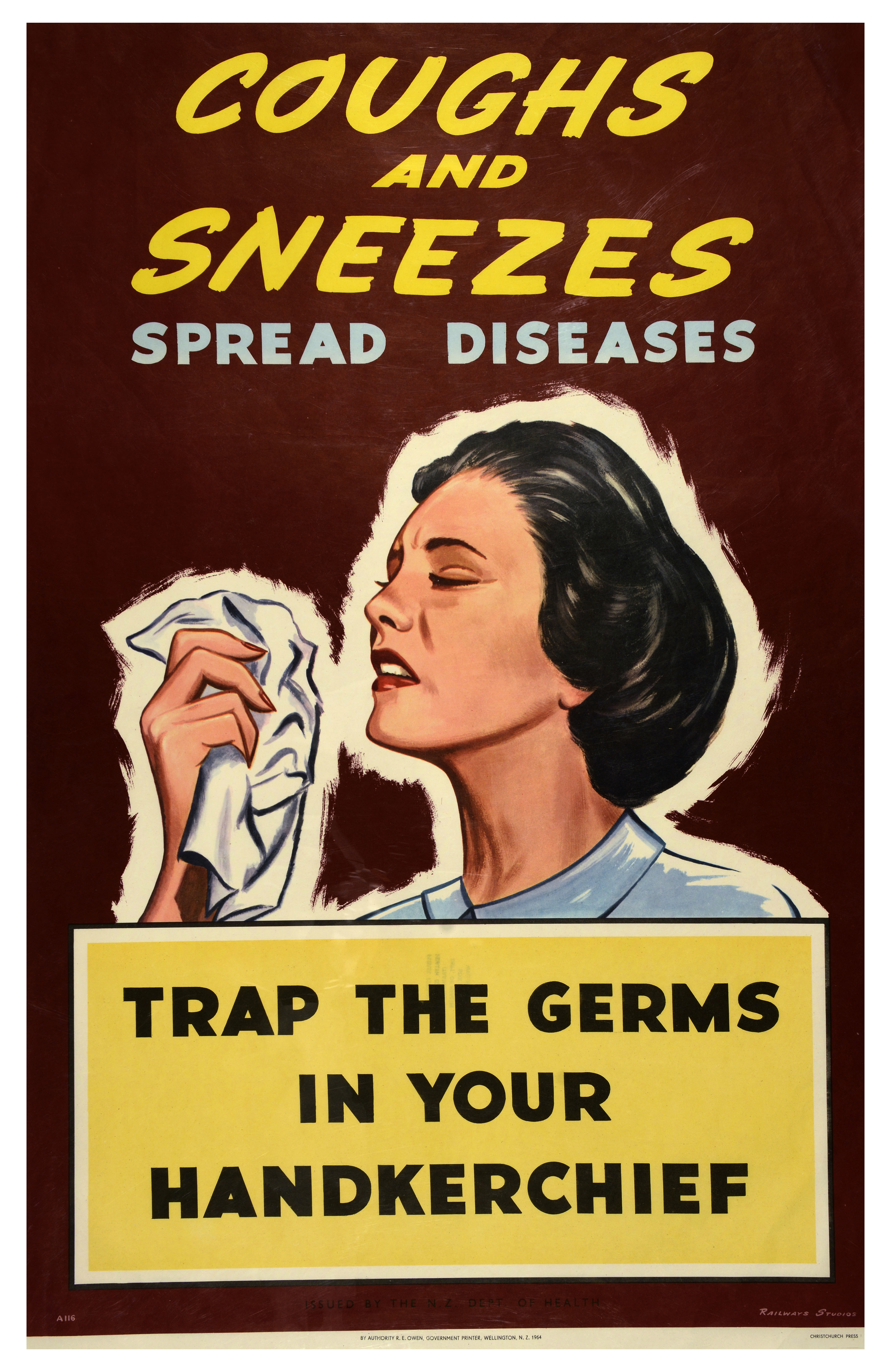THE HISTORY OF HANDKERCHIEFS
Before grandpa ever tucked them into his sleeve, handkerchiefs had a rich history!
Their origins trace back to ancient China, where they were used for sun protection. Later, the Greeks and Romans used them as 'sudarium' to wipe sweat or in performances, waving them in the air like a predecessor to glow sticks. No mucus in these handkerchiefs! At that time, blowing our nose was done with fingers.
In Japan, handkerchiefs were made of tissue paper and used by court ladies and nobles as early as the 800s. By the 1600s, these 'wiping papers' were used to clean sword blades or intimate areas after making love.
| Even today, handkerchiefs are used in Japan, but for different purposes. Children carry them to school for wiping sweat, drying hands, wiping stains, or minor spills. The tradition continues after school, where it is recommended to have three handkerchiefs with you: one for meals, one for hands, and one to offer to someone in need. However, it's frowned upon to blow our nose in public in Japan; the best is to snif it! |
During the European Renaissance, handkerchiefs gained popularity among the public, primarily for wiping sweat but also for blowing noses in private. During the French Revolution, handkerchiefs became romantic and fashionable accessories for the wealthy, adorned with embroidery and scents, symbolizing social status. Manufacturers even made them in various large sizes and shapes until King Louis XVI mandated square handkerchiefs in the kingdom.
Over time, except in Asia, blowing our nose into our fingers became socially unacceptable. Handkerchiefs were advocated to reduce contamination, as suggested by this New Zealand public health advertisement.

Like a mask, a handkerchief provides a barrier to microbes and germs, making it a good practice to use one to contain mucus!
THE EMERGENCE OF DISPOSABLE TISSUES IN AMERICA
During World War I, Kimberly-Clark supplied the U.S. military with Cellucotton, a creped cellulose product used in gas mask filters and bandages. After the war, Kimberly-Clark sought a new market for the product. In the 1920s, they attempted to integrate it into their Kotex brand sanitary napkins, but it didn't perform as expected.
In 1924, they finally introduced simple squares under the Kleenex brand, initially promoting them for removing face cream and makeup. Within a few years, the company realized that people had repurposed them for blowing noses.
In 1930, the product began marketing as disposable handkerchiefs. Subsequently, aggressive marketing campaigns aimed to flood the market and discredit traditional handkerchiefs.
THE WAR AGAINST HANDKERCHIEFS
Kleenex came out strong: handkerchiefs were deemed dirty, irritating to the nose (really?), and a hassle to wash.

THE EVOLUTION OF REUSABLE TISSUES
At Boaty, we agree with Kleenex on many things!
- Reusing a handkerchief you've blown your nose in isn't very hygienic (nor is putting it back in your pocket). And if it's still damp, it's a bit gross.
- Softness and comfort matter.
- Nobody enjoys doing laundry.
You see, that's why we've taken inspiration from disposable tissues to offer our soft, reusable tissues with a single use usage.
You always have a clean, dry handkerchief to blow your nose!
Instead of one large handkerchief reused everywhere, you have 12 or 24 (or more as needed). You blow your nose, and instead of throwing it in the trash, you wash it. And no, you won't contaminate your washer or laundry basket. Besides, if you have a cold, all your clothes are contaminated. And we don't throw out our clothes; we wash them...! So what's the difference?
You get a super soft and durable fabric handkerchief!
Even softer than cotton handkerchiefs and certainly softer than paper! On a softness scale of 1 to 5, a triple-ply tissue might be a 2-3..? Our tissues are at 6-7. They surpass the scale. In short, it's hard to get softer. Kleenex conducted plenty of tests in its ads to prove they don't tear when you blow your nose, but come on, guys! It's paper!
No more complicated to wash than our socks and undies!
Nobody wants to add a laundry chore to their life... but why do some people think it will be more trouble, more washing? Because Kleenex says so? We're already doing laundry! So we just toss everything together in our load of socks, undies, towels, and it doesn't take more time, water, soap... and it doesn't cost more either.
« BACK TO THE OLD HANDKERCHIEF! »
Actually, no. We're not going back to the old handkerchief.
We're moving forward with a new type of fabric that's much better than in the past, because it's a bit thicker, much softer, and really easy to wash (no need to scrub, just toss it in the washer and dryer).
We're moving forward by giving it the same way to use as paper, and which looks like paper, but has much better properties than paper.
We have a modern and cozy version; softer and more absorbent.
A durable version that will last decades.
A healthy version, dust-free.
A version that aligns with today's climate issues; protecting our forest resources and ecosystems.
IN CONCLUSION
Boaty's reusable tissue shows a great evolution and is far from ending up in grandpa's sleeve. From now on, it's possible to have an eco-comfortable and modern handkerchief.
Especially if you blow your nose with it, as it looks just like a facial tissue, everyone will think it's a Kleenex.














